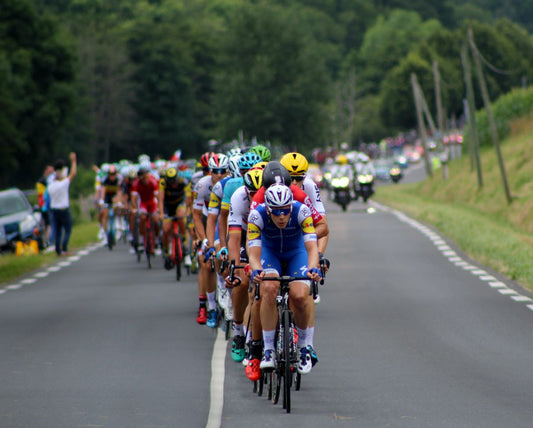rahy-ding in tam-duhn
verb, noun
Riding in tandem is when two cyclists ride side by side in a line.
Example usage: 'We decided to ride in tandem so we could talk while cycling.'
Most used in: Places with wide open roads and bike lanes.
Most used by: Recreational cyclists who want to enjoy the ride with a friend.
Popularity: 8/10
Comedy Value: 6/10
Also see: drafting, paceline, slipstreaming, echelon,
Riding in Tandem: What is it?
Riding in tandem, also known as drafting, is a cycling term used to describe two cyclists riding closely together, one behind the other. The cyclist in the lead is referred to as the “leader” and the cyclist in the rear is referred to as the “follower”. The follower benefits from the leader’s slipstream, which reduces the amount of effort required to maintain a given speed.
Riding in tandem is a popular practice among competitive cyclists, as it allows them to conserve energy and maximize their speed. Studies have shown that when riding in tandem, the follower can save up to 40% of their energy output, while the leader can save up to 20%.
It is important to note that riding in tandem can be dangerous if the two cyclists do not have a good understanding of the technique. The follower must remain a safe distance behind the leader, and both cyclists should be aware of their surroundings at all times.
The Origin of the Term 'Riding in Tandem' in Cycling
The term “riding in tandem” has been used since the late 19th century to refer to two cyclists riding side-by-side. The term was first used in the United States in the 1880s and was later adopted by British cyclists in the 1890s. It was also popular in France and Germany during this time.
The use of the term “riding in tandem” in cycling became popular in the early 20th century. The term was used to describe two cyclists riding side-by-side in order to share the workload and to increase speed. This style of riding was often used in races and for long-distance rides.
The term “riding in tandem” has been used in the cycling world since the late 19th century and is still a popular term today. It is used to describe two cyclists riding side-by-side in order to increase speed and to share the workload.












